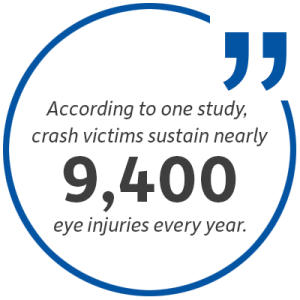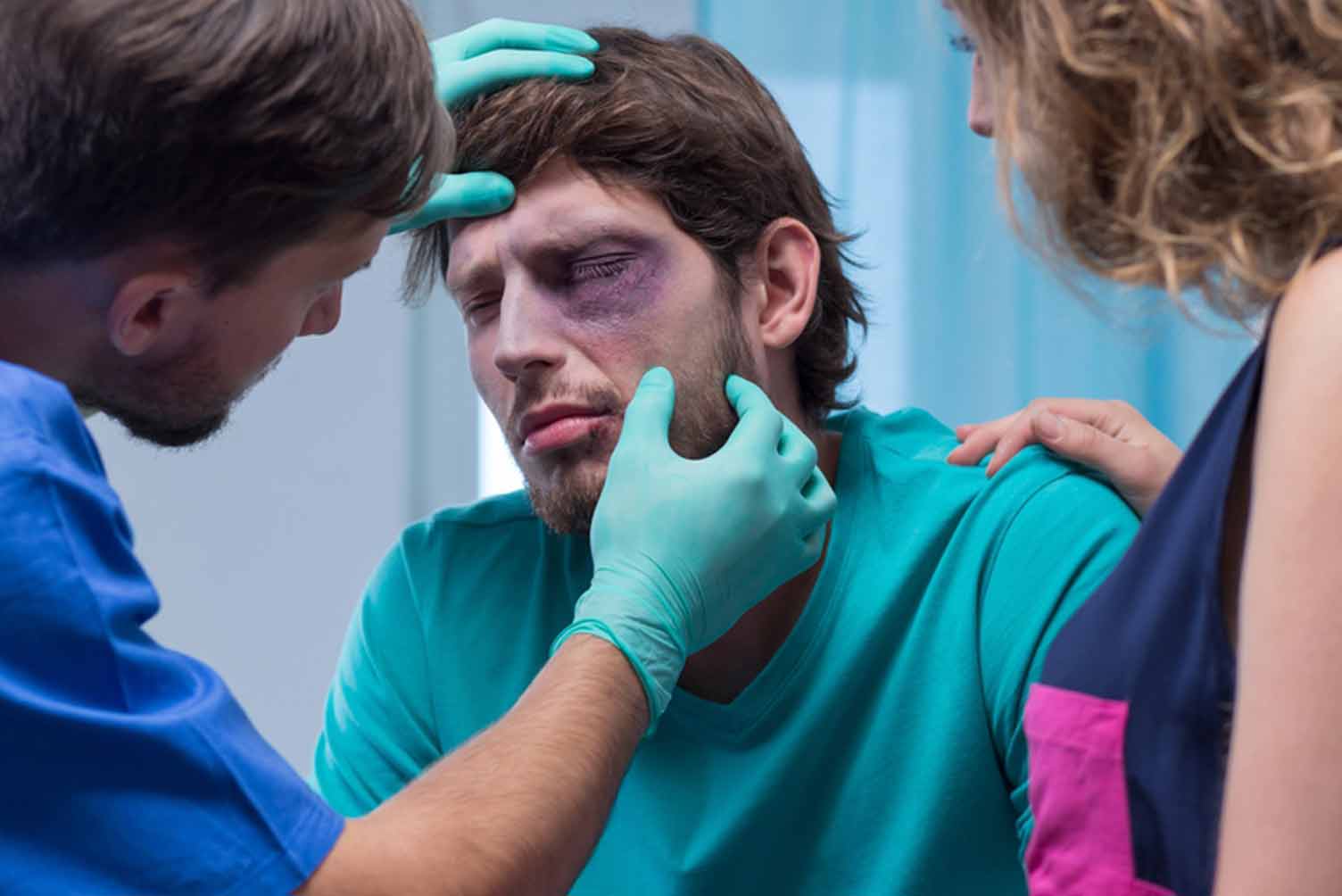A car accident eye injury can cause severe and permanent eye injuries, including blindness. When a serious and life-changing injury occurs, it can be completely overwhelming. What can you do to recover when facing such significant changes in your everyday life?
Even minor eye injuries should be treated promptly, as minor injuries can lead to serious complications.
Compensation for your eye injuries may be available if another driver or party caused the accident. Seeking the guidance of an experienced car accident attorney can increase your chances of getting the highest compensation package available.
If one or both eyes have been damaged due to an accident, you shouldn’t have to try to recover alone. Crossen Law Firm can walk alongside you as you focus on healing – and we focus on your legal case.
Common Causes of a Car Accident Eye Injury
You may have questions after your car accident related to specific eye injuries. For example, do all eye injuries result in vision loss? Can you break your eye socket? What kind of injuries can cause blurry vision or temporary vision loss?

There are several ways that car accidents can cause eye injuries. Most commonly, these injuries include:
- Traumatic brain injuries can damage the occipital lobe, causing temporary or permanent blindness, blurry vision, and blind spots.
- Occipital bone fractures are injuries to the bones around the eye socket that can impair vision even after healing.
- Direct eye trauma occurs when objects in the car penetrate the eye, damaging any part of the eye; this can cause total vision loss in the injured eye.
Seeking Treatment for Your Eye Injuries
After a car accident eye injury, medical attention is not optional. Please seek prompt medical care to diagnose any injuries, including eye damage. In the immediate aftermath of an accident, the stress and adrenaline make it difficult for you to gauge the seriousness of your injuries on your own.
The eye is a complicated organ, and any threat to your vision must be taken seriously. Always seek medical help immediately after an accident, even if your vision initially seems fine.
Medical attention following an eye injury may include:
- Emergency treatment at the scene of the accident
- Medical attention at the hospital following the accident
- Follow-up appointments with an ophthalmologist
- Surgery and recovery
- Vision therapy appointments
Because vision problems may develop in the days, weeks, and even months after an injury, it is essential to follow your doctor’s instructions and monitor any changes in your vision.
Legal Options After an Eye Injury Accident
The good news for anyone who has suffered eye problems after a car accident is that you have legal options. You do not have to suffer through these losses without support.
If another driver or party caused the accident, you can pursue compensation through a lawsuit. This is especially important when the insurance payout is not sufficient to cover the following:
- Medical costs
- Rehabilitation costs
- New visual aids such as glasses, magnifiers, screen readers, large print books, and mobility aids
- Property damage
- Pain and suffering
- Disability
Be sure to consult an attorney about your compensation options, as another driver’s negligence may entitle you to damages.
What Does a Car Accident Attorney Do?
An attorney will walk you through the legal process and guarantee that all of your documents are accurately filed with the court on time.
Your attorney will collect and review the evidence related to the accident, identify the at-fault party (or parties), and create a compelling argument that demonstrates liability. They will also compile all of your economic and non-economic losses into a comprehensive list so that they can make a strong argument regarding how much you deserve to be compensated.
Eye injuries, especially those that result in temporary or permanent vision loss or blindness, are very serious. They are one of the most life-changing injuries you can experience from a car accident. Your attorney will consider this specific injury when demonstrating to an insurance company, judge, or jury that you deserve restitution for your losses.
Speak to Crossen Law Firm for a Free Case Evaluation
Car accident victims in Indianapolis and the surrounding areas will find their legal allies at Crossen Law Firm. As one of Indiana’s premiere personal injury law firms, we are proud to protect the rights of drivers, passengers, and pedestrians alike.
If you lost your vision or experienced a car accident eye injury due to another driver’s negligence, contact us for a free case consultation.
Our experienced personal injury attorneys can help you get the compensation you deserve for the losses and pain you have experienced.
We don’t get paid unless we win your case, so there is no risk in retaining Crossen Law Firm for your eye injury claim. Reach out to us today at 317-401-8626 to schedule your free consultation.

 317-401-8626
317-401-8626 
.jpg)